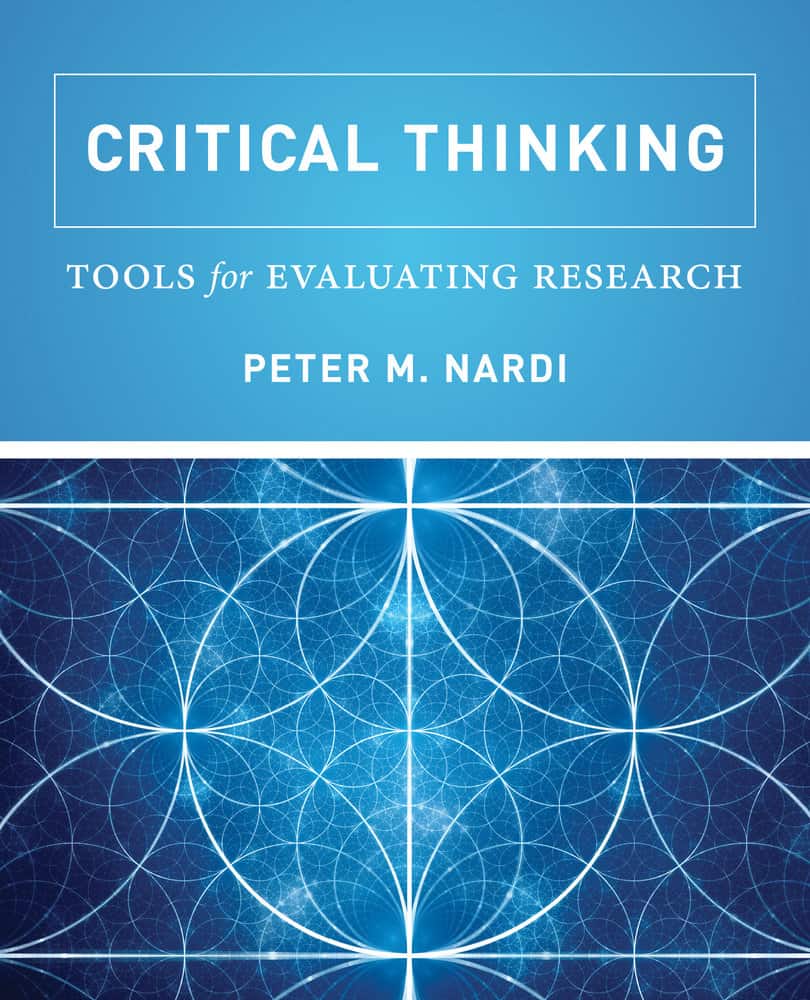This guest post is published as part of our Scholar-Activist series related to the American Sociological Association conference from August 11 – 14 in Philadelphia. #ASA18 #ScholarActivist
By Peter M. Nardi, author of Critical Thinking: Tools for Evaluating Research
“Angered by the constant presidential cry of ‘fake news’ when the story is really something one disagrees with, I wanted to continue my goal of changing how people think about what they read and hear on a daily basis in the media. What skills do our students and citizens need to understand the underlying data and research that gets distorted, omitted, and manipulated in Twitter feeds and Facebook posts? How will they learn to distinguish fact from opinion?”
I’m all about changing how people think through things, plan, and also govern. Really, I am and I attempt to achieve it daily. That’s one reason why I became a professor at a liberal arts college with a clear vision of engaging people in learning and using that knowledge to make a socially responsible impact on theirs and others’ lives. This all might sound like a cliché, best reserved for answering a question at some beauty contest. But seriously, with constant reminders of “breaking news” from our smartphone notifications, cable TV alerts, and Facebook/Twitter feeds, we may be at a tipping point wondering how much we can actually absorb and process critically.
A lot of this information inundation involves stories about research touting the latest discovery of the best superfood with truckloads of antioxidants capable of slowing down age, or political posts in social media that require cross-checking with Snopes or Politifact before concluding these stories are rumors or bad science. Yet, in this age of highly politicized and divisive issues, the information we see tweeted in short sentences must also be verified as opinion rather than fact.
 Angered by the constant presidential cry of “fake news” when the story is really something one disagrees with, I wanted to continue my goal of changing how people think about what they read and hear on a daily basis in the media. What skills do our students and citizens need to understand the underlying data and research that gets distorted, omitted, and manipulated in Twitter feeds and Facebook posts? How will they learn to distinguish fact from opinion?
Angered by the constant presidential cry of “fake news” when the story is really something one disagrees with, I wanted to continue my goal of changing how people think about what they read and hear on a daily basis in the media. What skills do our students and citizens need to understand the underlying data and research that gets distorted, omitted, and manipulated in Twitter feeds and Facebook posts? How will they learn to distinguish fact from opinion?
In the Disney animated movie, Inside Out, the character, Joy, trips over two boxes, one labeled “facts” and another marked “opinion.” The pieces in each box mix together. When Joy tries to remedy the situation and put them back into their proper container, she exclaims, “These facts and opinions look so similar!” And comedian John Oliver said this about climate change debates: “You don’t need people’s opinion on a fact. You might as well have a poll asking: ‘Which number is bigger, 15 or 5?’ or ‘Do owls exist?’ or ‘Are there hats?'”
Too often, we ourselves confuse fact with opinion, and make conclusions that are not logically connected to the data and findings. Critical Thinking: Tools for Evaluating Research explores such topics and provides critical thinking techniques to evaluate interpretations, opinions, and facts as presented in research studies, polls, surveys, and everyday observations from the media.
Just consider the relevance of making distinctions among anecdotes, pseudoscience, and science. Anecdotes are information collected from small, often biased, samples chosen to support some claim or product. Often the collection of these testimonials is not typically done systematically with reliable and valid measurements and it usually implies causal connections among a limited set of variables without first establishing the necessary conditions to claim causality. I know, it’s difficult to believe that those ads about baldness having been cured may not be factual!
Anecdotes appear quite prominently in pseudoscience writing and characterized by confirmation bias: a tendency to focus more on ideas, events, and recollections that reinforce already held beliefs. It is related to such cognitive ideas as selective perception, selective recall, and selective exposure, and appears quite frequently in popular and scholarly research articles about political beliefs, race, and gender. It might be what we do when we choose between MSNBC and Fox News.
Science, as we know, involves systematic designs, testable hypotheses, reliable & valid measurements, replication, control of alternative explanations, and representative samples (preferably random probability sampling). Deconstructing a research study and reading between the lines of a journalistic report of a study are salient skills in today’s social-mediated world. Understanding these simple distinctions and applying them to one’s lived experiences are at the core of education and the reasons why I chose a career in teaching and writing books for all of us who will continuously be students seeking knowledge, truth, and critical thinking.



